If life begins at 40, the Ford Sierra is just hitting its stride.
The family car came into this world in 1982, a year unlike few others. The Falklands War was dominating the front pages of newspapers, John Delorean’s dream of the Delorean Motor Company came crashing down as the company was placed in receivership and Ozzy Osbourne warmed up an audience at the Des Moines Veterans Memorial Auditorium, in Iowa, by biting the head off a bat.

Ozzy wasn’t the only one causing a sensation that year. Ford launched of one of the most influential mainstream cars – the Sierra – and drivers around the world were shocked by what they saw.
Uncle Henry’s replacement for the tried and tested, safely-does-it Cortina took the company’s design language into new areas, and it proved divisive.
The story of the Sierra is one of immense bravery, betrayal and panic, and its legacy would have stark repercussions for its maker well into the 1990s. It’s a car that went from tabloid shock story to being perceived as no more radical as Shepherd’s Pie within just a few years. It also became a legend in motorsport and modifying circles. The thing is, my knowledge of all that came later in life – for young me (I was born in the same year as the Sierra) the appeal of the Sierra was simple. Just look at it.
Peering out of my father’s angular Volvo 240 at other undistinguished square shapes on the UK’s road network, whenever the curvy Sierra hoved into view it was a vision of the future. While the Rover SD1 and Citroen CX offered similarly avant-garde styling in mainstream cars, they simply weren’t as visible, as often. The Sierra wasn’t a car, it was an event, a spaceship on wheels.
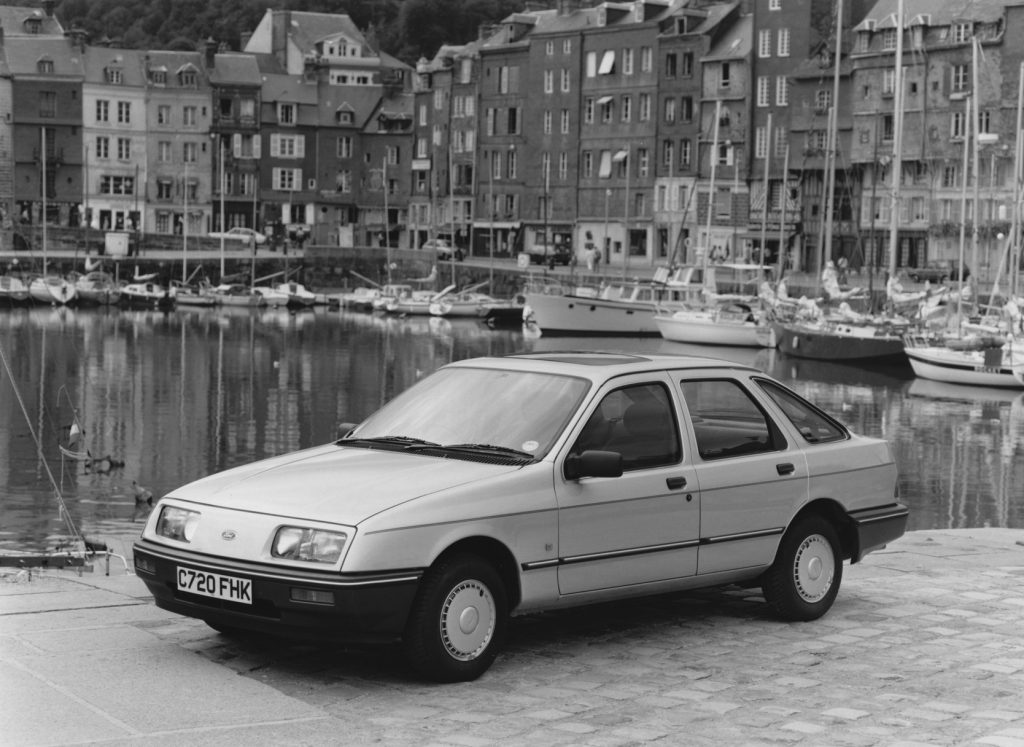
The Cortina had been the backbone of British life for decades. Whatever had happened in the wider world during its production run, you could get in a Cortina and forget about it – you knew where you were with it, you knew what you were getting, and ascending the ladder of trim levels was a simple way to tick off career goals, with promotions at work resulting in a company car with a posher trim level.
However, the 1973 fuel crisis had seen petrol prices more than double, and this focused Ford’s minds on getting drivers the most miles out of their hydrocarbons – a key factor for fleet managers, Ford’s real target for the Sierra. The boxy Cortina’s shape had all the air cleaving abilities of a breezeblock. The Sierra’s swoopy shape was among a wave of aerodynamically efficient new cars for 1982, such as the Mercedes-Benz 190 and Audi 80. Neither of those looked quite as radical as the Sierra, however.
Ford’s top brass were nervous throughout the car’s development. After all, the Sierra was a $1.2bn investment that would usher in a daringly different design. Had Bob Lutz, head of Ford Europe, watched too many art-house films? Lutz was unrepentant – the Sierra was to be a statement of intent, and a crack team consisting of Uwe Bahnsen (President of Design), along with Patrick Le Quement, set about pulling the vision together.
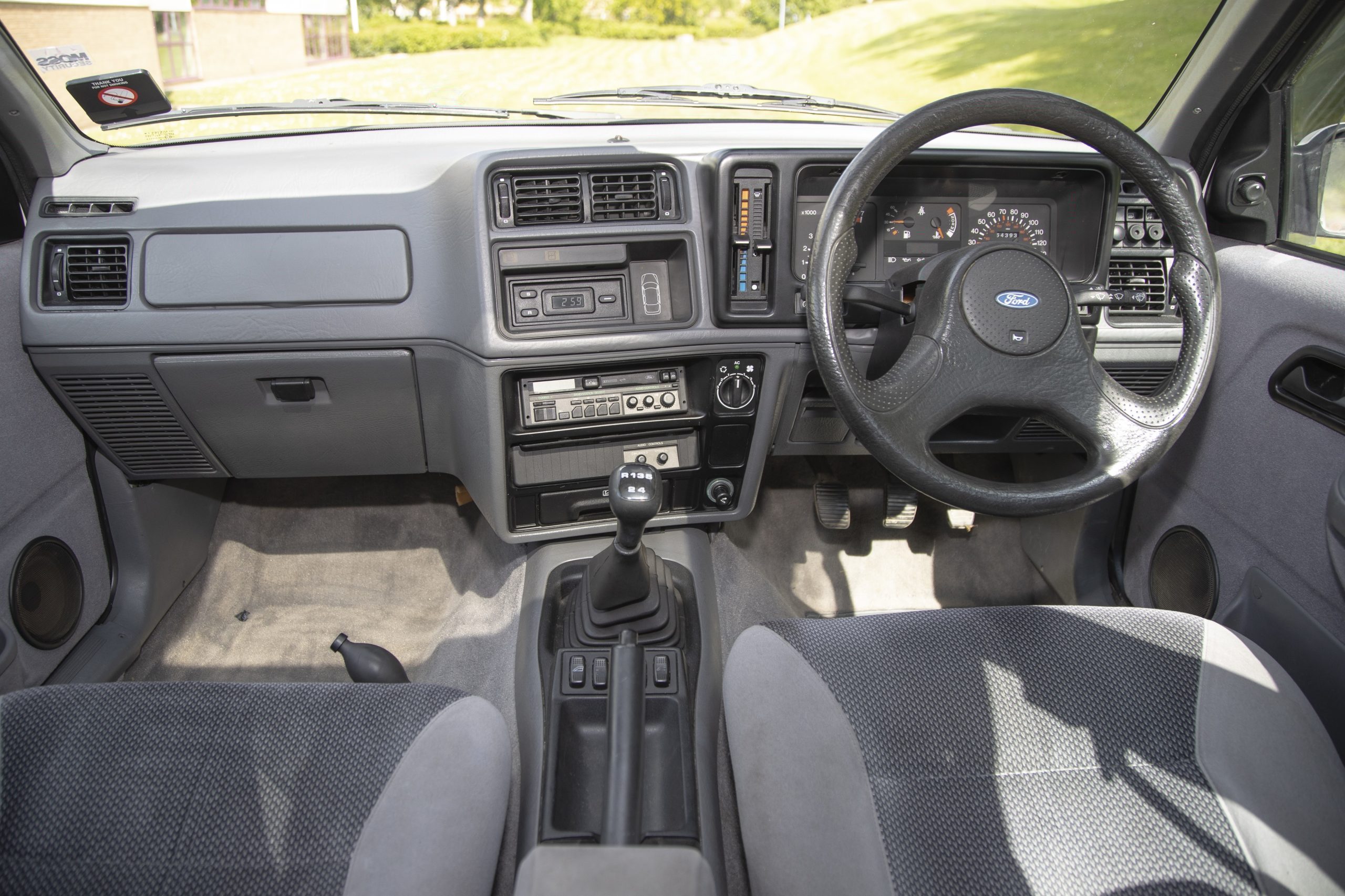
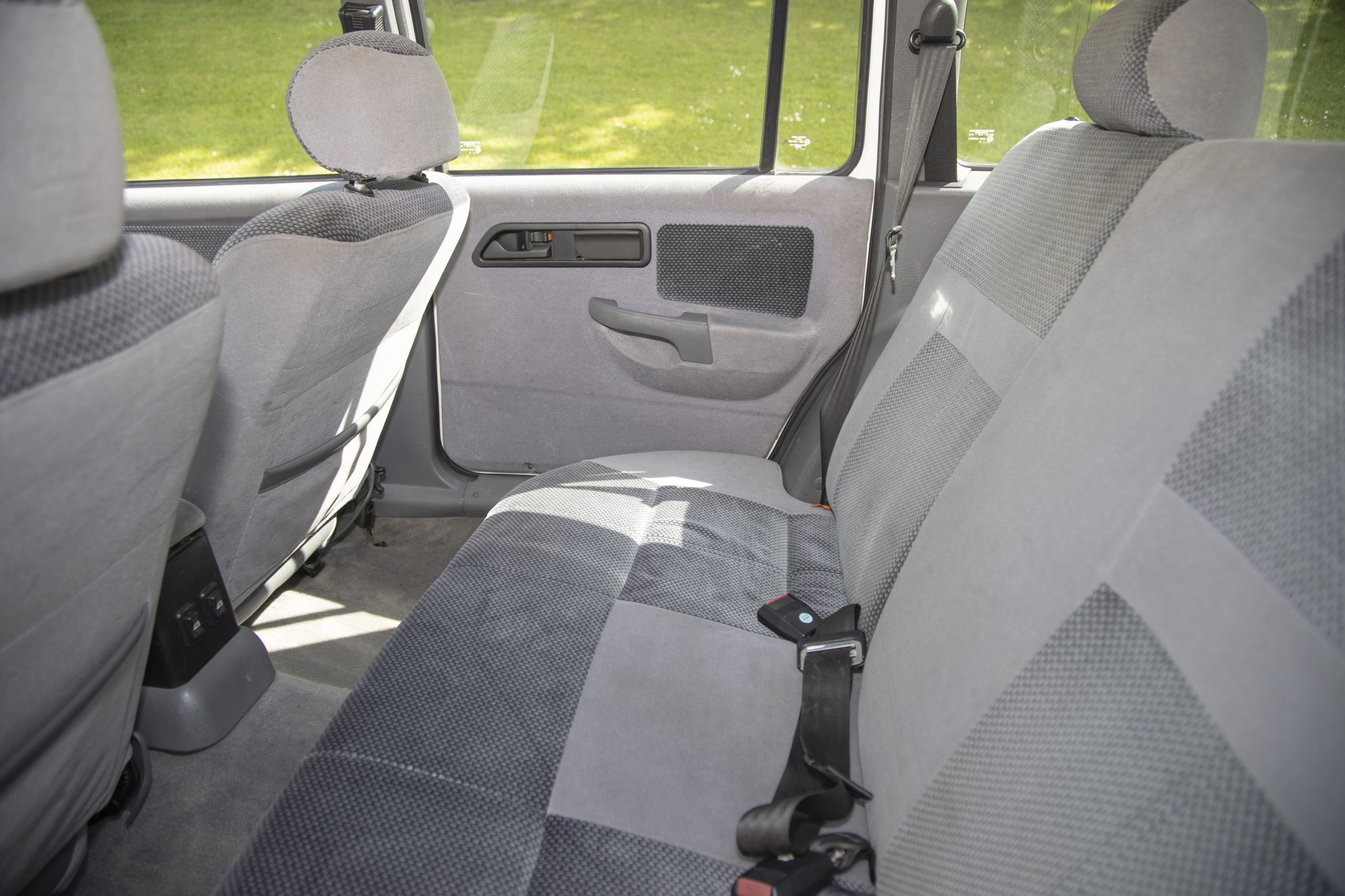
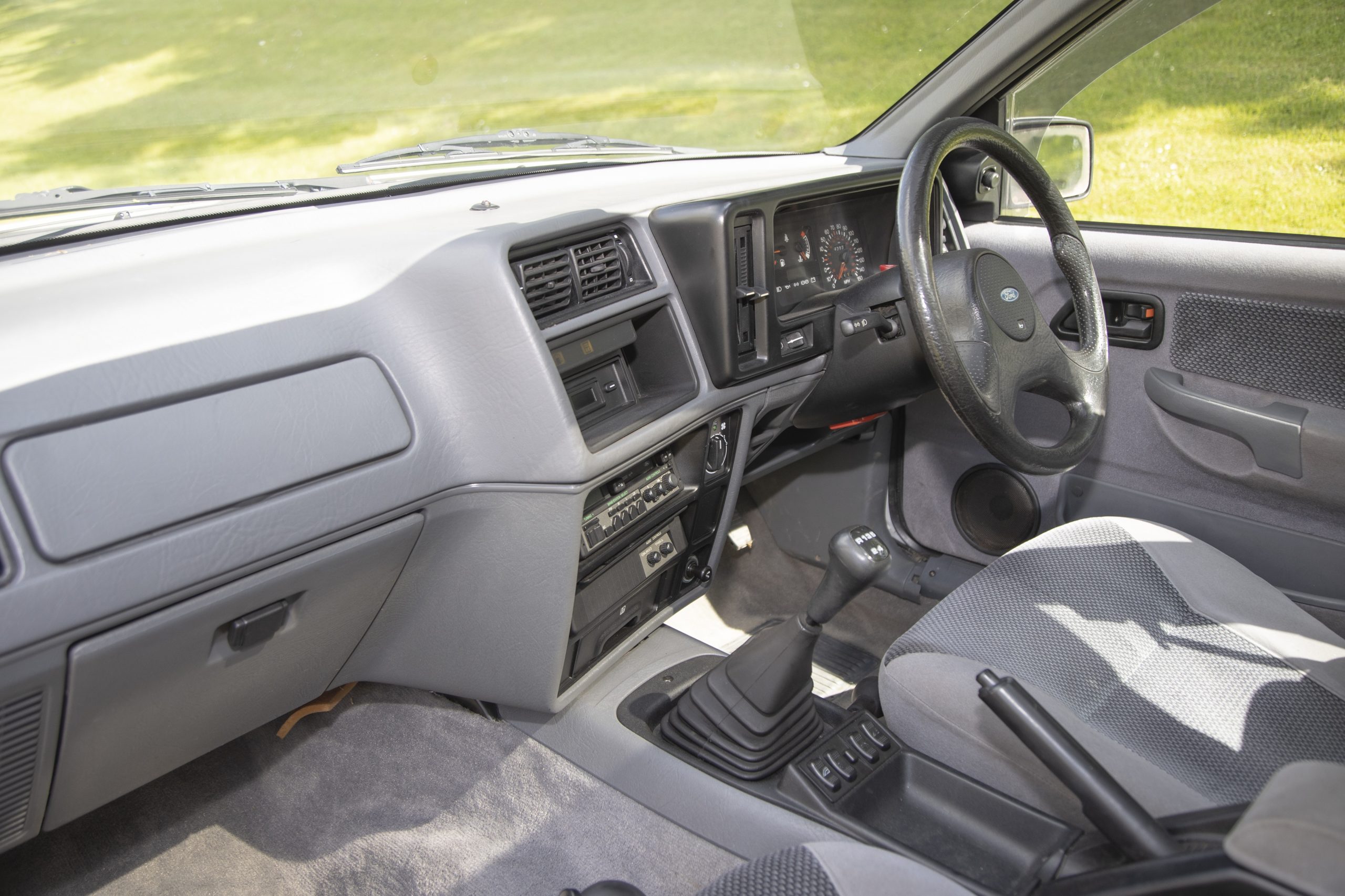
Come together it did, with a drag co-efficient of 0.34 (the Cortina’s was 0.45), far better than any of its rivals and thus offering significant fuel savings for fleet operators. Inside, drivers got a wraparound BMW-style dashboard and a light display system warning of open doors, lamp failures and frosty outside conditions. It was a world apart from the Cortina.
Well, sort of. While the independent rear suspension did much to improve ride and handling over the old car, much of the engine offerings were, if we’re being kind, tried and tested – or simply old and tired, if we’re not. However, for fleets, tried and tested is what mattered. Unfortunately, so did familiarity and the reaction from certain corners of the press, many dealers and customers alike was not entirely welcoming of this vision of the future.
Despite rapturous praise from journalists on its release, Sierra sales were far behind where they needed to be. It was a situation not helped by Ford dealers, who’d been spooked by the new Sierra during the build up to its launch and had stockpiled Cortinas in advance of the new car’s release.
With some crafty discounting, you could pick up a top-of-the-range Cortina Ghia for the same price as a base-model Sierra 1.6. More than 11,000 Cortinas were sold in 1983, severely denting the Sierra’s figures – the old car wasn’t dying without a fight, and the tabloid press smelled blood. Lurid headlines claimed the Cortina would be put back into production, and difficulties with crosswinds (soon fixed) suggested the Sierra was dangerous, and the rubber bumpers disingenuous for hiding damage.
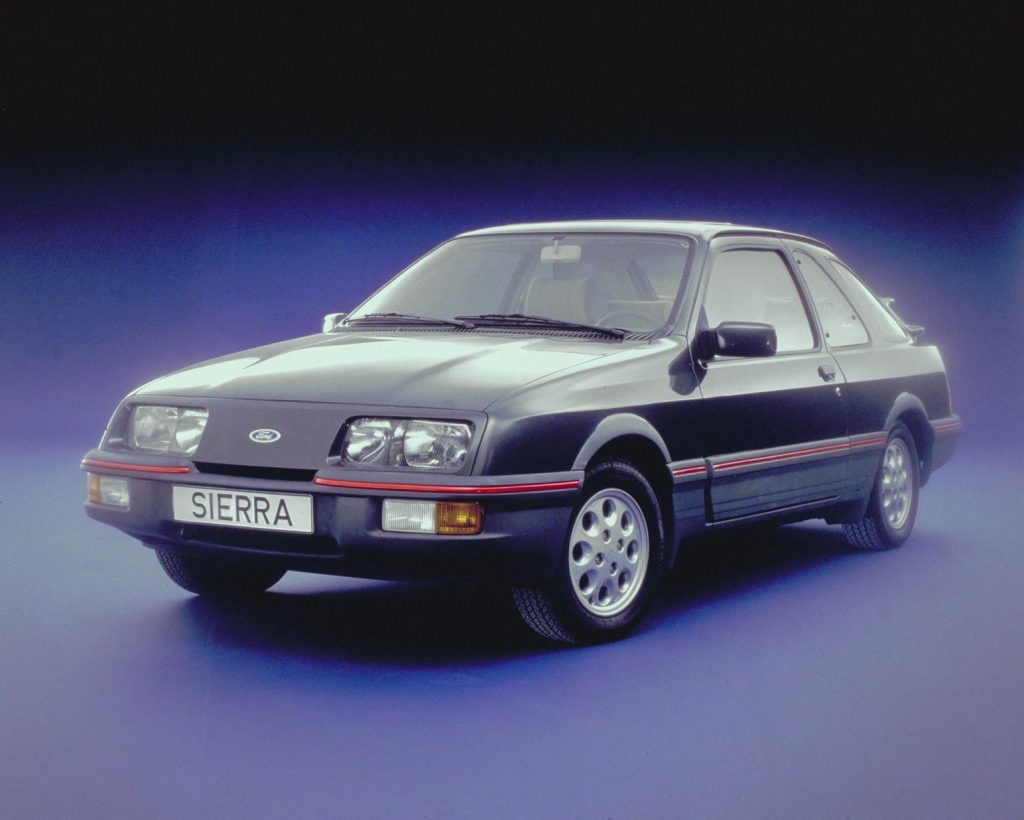
Though Ford backed the car, behind the scenes Bahnsen, Le Quement and eventually Lutz would all leave the Blue Oval. Ford would hastily slap a longer boot on the back of the Escort to create the Orion to win back Cortina buyers, and would later develop saloon-shaped Sierra Sapphire in 1987.
Ford’s marketing team went into overdrive, with a full-on assault via TV, press and motorsport. We’ll come on to the latter in a moment, but if there was one variant that did much to save the Sierra in the pre-Cosworth days, it was the XR4i. Powered by a 2.8-litre Cologne V6, this 148bhp variant took the spaceship styling to a new level, echoing the Probe III concept car that had preceded the Sierra’s launch by a year with a massive biplane rear spoiler. It was even more aerodynamically efficient that the standard model, with a drag co-efficient of 0.32. Oh, and most importantly for me, I could afford to own and run one. Well, in 1:58-scale, anyway.
Toys were a big part of Ford’s marketing plan, with Sierras cropping up everywhere from Scalextric to Matchbox. Over the years Matchbox made 11 versions of the XR4i model – my first was a yellow ‘XR4x4’ model that was incorrectly painted, and a black Texaco one. I must have had a dozen of each over the years, plus the Matchbox Superkings RS500s in all colours – sadly all lost to time.
It’s pretty much the same story for the real things. Cosworths are now the most common Sierras left, their values keeping them alive despite them being the number one target for car thieves in the 80s and 90s. Lesser Sierras weren’t as lucky, with rot, neglect and scrappage near-enough eliminating an estimated 95 per cent of the UK’s once plentiful stockpile. If they were lucky, the bits went on to propel myriad kit cars – the mixture of manual gearbox, rear-wheel drive and plentiful parts supply made the Sierra the perfect donor car.
Once the ghost of the Cortina was laid to rest, the Sierra did become popular, though not to the level Ford had first envisioned, at least in the UK. It was dependable, relatively simple and comforting – just like the Cortina had been. Ironically, when it was eventually replaced by the front-wheel-drive Mondeo in 1993, reps moaned that the new car wasn’t as comfortable as the Sierra, and wanted their old steeds back.
A key part of the Sierra’s increase in market approval was, of course, the car’s exploits in motorsport. The RS Cosworth would become one of the most successful touring car racers ever built, and it didn’t fare too badly in rallying either – just ask the McRae family.
Touring cars were the main focus, and after a successful development year with the Sierra-related, US market Merkur XR4ti in the British Saloon Car Championship, the RS Cosworth was launched in 1986. What began as 350bhp in race trim grew to 550bhp by the time the Sierra was retired from racing in 1990.
Arcane class structures meant that the Sierra Cosworth didn’t win the championship outright until 1990, even if it took the lion’s share of all the race victories. Despite this, the cars were big, brutish and tricky to drive, which made for great action. The sight of Steve Soper’s black-and-red Eggenberger Ford Sierra RS500 Cosworth was something to behold. Such motorsport antics made quite an impression on petrolheads, myself included; it ignited a passion for cars that means you’re now reading this.
I never could convince my father to buy any Sierra, let alone a Cosworth. After the aforementioned Volvo was retired, he developed a thing for well-suspended Peugeots to traverse the craterous Fenland ‘roads’ around where we lived. By the time I got on the road myself, Sierras had either vanished completely or accelerated in value with the gusto of a Cosworth on boost. I have been fortunate enough to drive a few, however. The lean burn 1.8 LX was hardly a masterpiece of motoring joy, but I could see how it became the most popular model – comfortable, frugal, charming in its simplicity, if devoid of excitement. The Saphire Cosworth, on the other hand, was synapse-twitchingly exciting to drive hard
I still haven’t driven the dream car, though – the RS500. A run of 500 homologation specials with lots of fancy and largely unused kit for road use, but which gave the Sierra a competitive edge on the race track, they helped to make the Cosworth a legend on the high street and the working man or woman’s supercar.
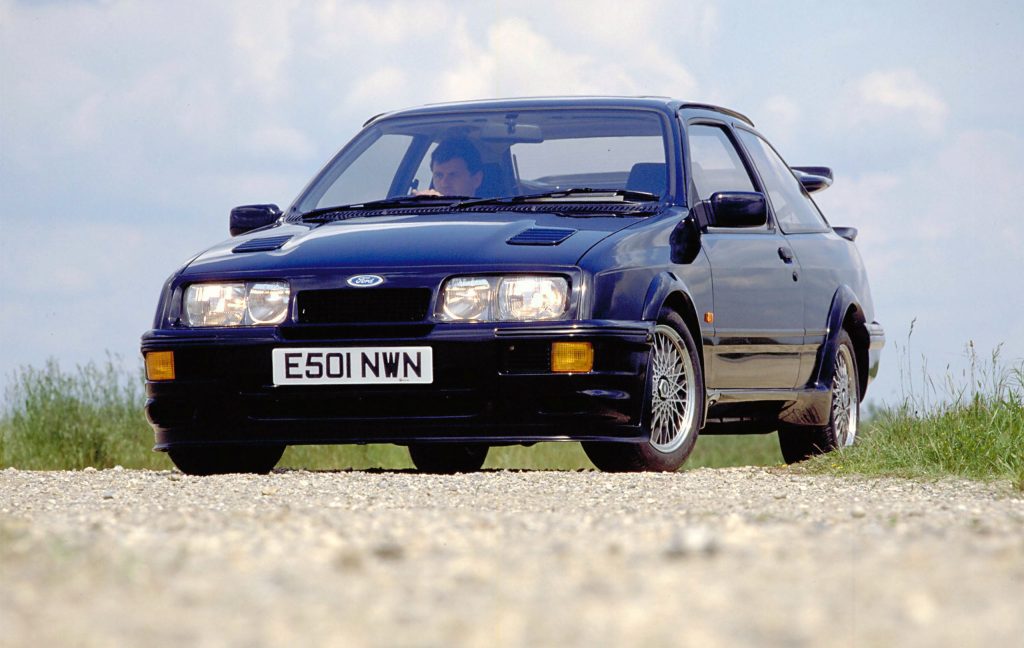
Unsurprisingly, RS500s are now prized for originality, and can be worth far more than the aristocratic supercars from their heyday – a mint RS500 can cost more than a Porsche 930 Turbo Turbo or a Ferrari Testarossa.
But what of the Sierra’s legacy? Ford was stung by the negative response to the Sierra’s styling, which led it down the path of conservatism and ultimately the turgid MkV Escort. It would take the best part of 16 years after the Sierra for Ford to pluck up the courage to deliver an equally bold family car – the Focus.
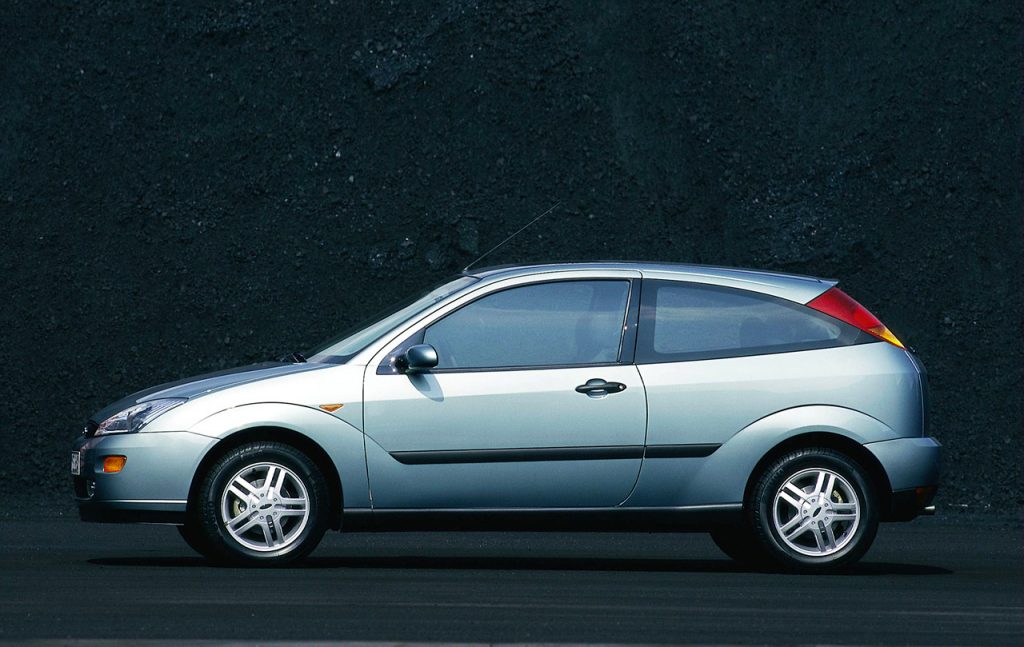
Despite the early British sales problems, the Sierra was a hit elsewhere – it outsold the Taunus (Cortina) three to one in Germany, and Ford would end up selling 2.7m Sierras worldwide, 1.3m in the UK. Alongside the curvaceous Audi 100, it pointed the way to a smoother, more aerodynamic approach to car styling, one that’s ever more important in today’s EV world.
The Sierra was never a perfect car – but it was a brave one, which arguably set the template for automotive design in the latter two decades of the century. As we toast its 40th birthday, it deserves more recognition, and whether they’re a 1.3 or an RS500, the few that remain should be cherished.
Tracking Ford Sierra values
| Model | HPG ave. value Dec 2015 | HPG ave. value Dec 2021 | Diff. |
| RS Cosworth | £22,175 | £55,850 | +151.9% |
| Sapphire RS 4×4 | £15,025 | £33,725 | +124.5% |
| Sapphire RS Cosworth | £12,575 | £21,725 | +72.8% |
| 1300 3dr | £2875 | £3475 | +20.9% |
| RS500 Cosworth | £63,575 | £73,475 | +15.6% |
| XR4i | £6138 | £6800 | +10.8% |
| XR 4×4 | £6475 | £7125 | +10.0% |
The Hagerty Price Guide reveals it’s not the RS500 Cosworth version of the Ford Sierra that has made the biggest percentage increase in price, writes John Mayhead, Editor, UK Hagerty Price Guide – it’s the standard Cosworth and Sapphire Cosworth – although the average value is slightly misleading.
In fact, the range of values for the flagship RS500 has increased significantly, with the lowest Hagerty Price Guide value actually dropping from £48,900 to £46,100 but the top value rising from £80,100 to £114,000. This tells us that the market has matured – the rush for any old RS500 has long passed, and buyers now pay a premium for the best preserved or restored. Prices of the RS500 actually peaked in our May 2019 Price Guide, dropped back, and have recovered in the past 12 months.
It is also interesting to see how well in percentage terms the Sapphires have done, with the Sapphire Cosworth 4×4 more than doubling in average value. Plus, even the standard petrol and diesel models have increased around 20 per cent in value in the same time. It’s doubtful that any of those who took an instant dislike to the Sierra when it was new could have imagined that the once common-as-garden Sierra in humble rep-spec’ would come to appreciate in value.
Read more
How the Cavalier stole the Sierra’s thunder
Our Classics: 1986 Ford Sierra RS Cosworth
The fastest Ford the world never saw











Ozzy bit something thrown from the audience, thinking it was plastic. He didn’t bring a bat with him. Writers. You’ll tell us anything, won’t you?
We know and enjoy the story, Sidney, but figured it’s better to let one of the great rock n roll myths live on, and get on with talking about the Sierra.
The Cossies were fine,but the lesser ones… We had a 1600 as pool car at work and it tried to kill everyone that drove it! Not the handling ,but the lack of acceleration! Spot an overtaking opportunity,drop a gear,pull out,put the foot down ,and sod all happened!
I remember quite a few stories in the UK press when the Sierra was first released about low-speed crash damage rippling the chassis, hence writing quite a few cars off – anyone else remember this?